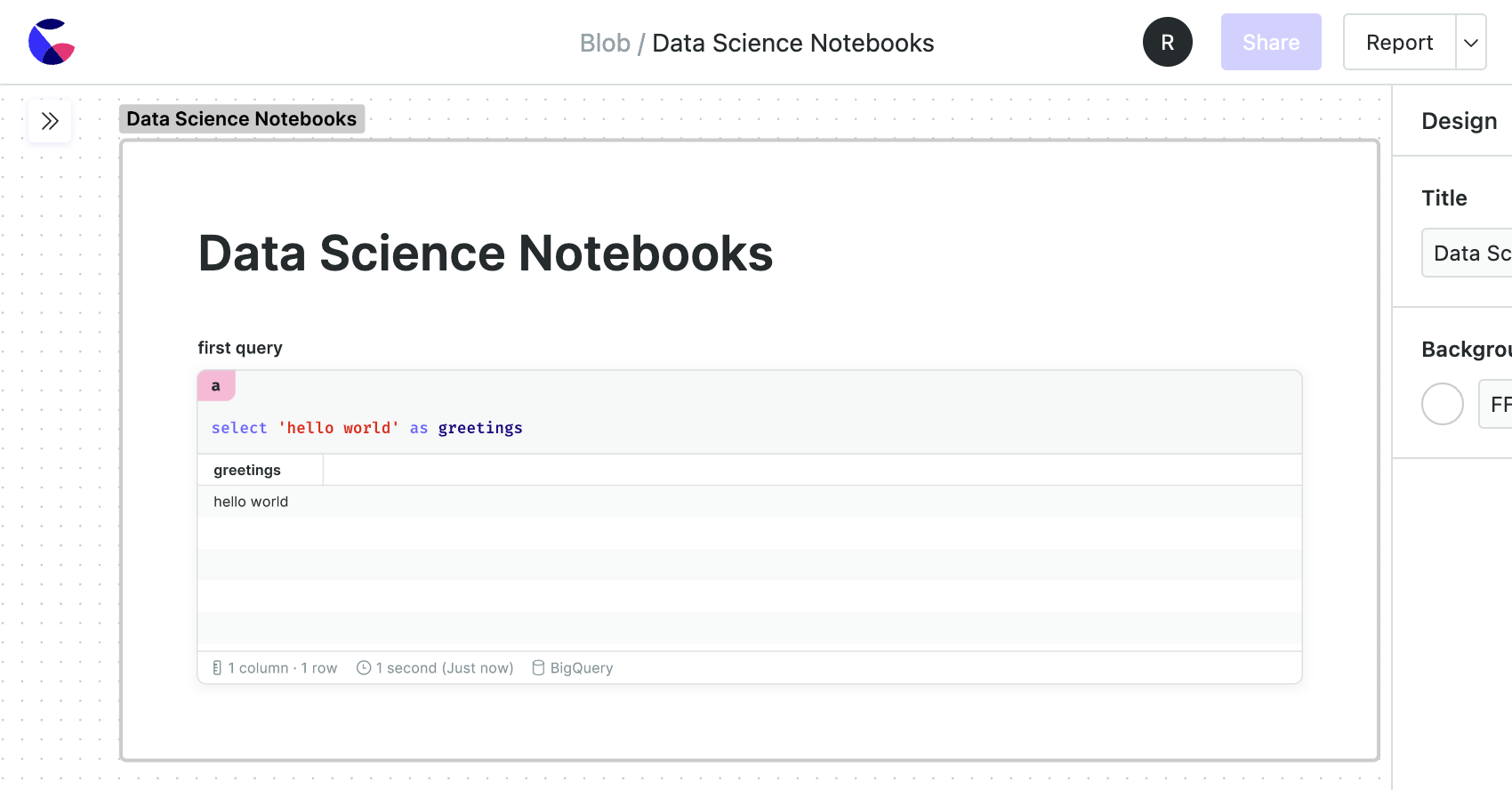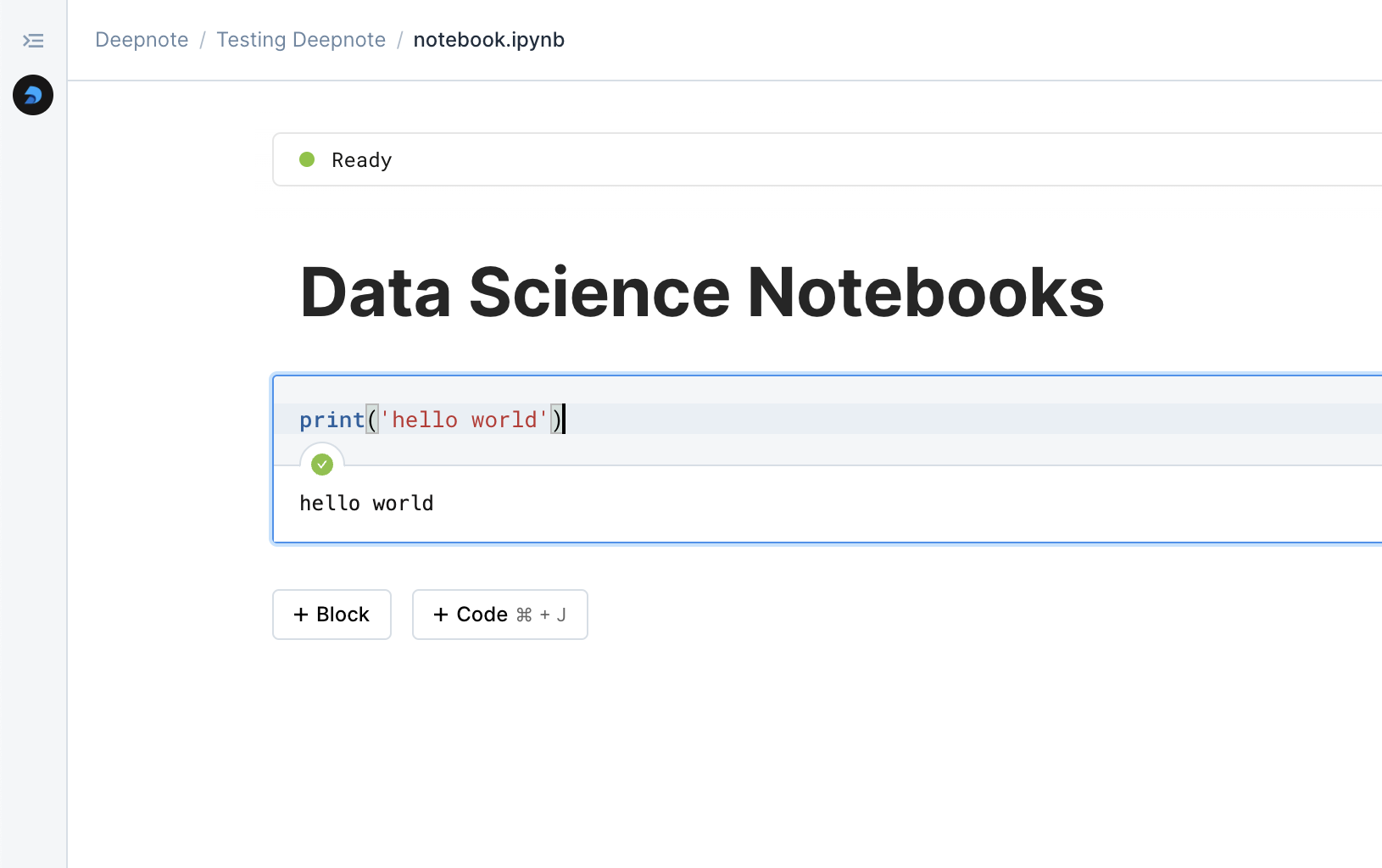
Count

Comparing two data science notebooks.





In the evolving landscape of data analytics platforms, Count and Deepnote represent different approaches to making data analysis more accessible and collaborative. While both platforms aim to enhance data workflows, they serve distinct needs within the analytics ecosystem.
Count focuses on making data analytics more accessible to business users while maintaining powerful capabilities for SQL-first analytics. The platform emphasizes visual analytics and business intelligence features alongside notebook functionality.
Deepnote takes a broader approach to data science, focusing on collaborative notebook-based workflows while supporting multiple programming languages and providing comprehensive integration capabilities.
Count's approach centers on combining SQL notebooks with business intelligence features. The platform provides a unique blend of coding and no-code solutions, making it particularly accessible to teams that bridge technical and business roles. Its visual query builder and chart creation tools allow business users to interact with data without necessarily writing code.
Deepnote provides a more traditional data science environment enhanced with modern collaboration features. The platform supports various programming languages and analytical approaches, focusing on flexibility and extensibility for data science teams.
Count's interface is designed to be approachable for both SQL experts and business users. The platform combines notebook functionality with point-and-click interfaces for data exploration and visualization, creating an environment that supports different levels of technical expertise.
Deepnote offers a more comprehensive development environment, emphasizing professional data science workflows. The platform's interface balances accessibility with advanced features, supporting everything from exploratory analysis to production workflows.
Count provides strong SQL-focused data connectivity, with particular emphasis on making database connections and queries accessible to various team members. The platform's approach to data integration emphasizes simplicity while maintaining powerful capabilities.
Deepnote offers extensive integration options, connecting to various data sources and modern data tools. The platform's architecture supports both traditional and cloud-native data workflows, providing flexibility for diverse team needs.
Count emphasizes collaboration between technical and non-technical team members. The platform's features support different ways of interacting with data, from writing SQL queries to using visual tools, making it easier for diverse teams to work together on data analysis.
Deepnote focuses on real-time collaboration among data professionals, with features designed for concurrent work on complex analyses. The platform enables simultaneous editing, commenting, and version control, creating an environment optimized for technical team collaboration.
Count serves:
Deepnote suits:
Count excels In:
Deepnote shines In:
The decision between Count and Deepnote often reflects organizational needs and team composition. Teams requiring a balance between technical capabilities and business accessibility might find Count's approach more aligned with their needs. Its combination of SQL notebooks and visual tools creates an environment where different types of users can work effectively with data.
Organizations focusing on comprehensive data science workflows might find Deepnote more suitable. Its support for multiple programming languages and advanced features creates an environment well-suited to professional data science teams.
Both platforms continue to evolve, with Count expanding its capabilities while maintaining its focus on accessibility and SQL-first analytics. Deepnote continues to enhance its collaborative features and integration capabilities to serve modern data science teams.
Count and Deepnote serve different needs in the data platform ecosystem. Count excels in providing an accessible environment that bridges technical and business users, particularly valuable for organizations seeking to democratize data analysis while maintaining SQL-based workflows.
Deepnote offers a more comprehensive platform for professional data science teams, emphasizing advanced capabilities and real-time collaboration. Its support for multiple languages and extensive integration options makes it particularly valuable for teams requiring sophisticated analytical capabilities.
The choice between these platforms should align with your organization's specific needs:
Understanding these distinctions helps ensure you select the platform that best supports your specific use cases while providing the necessary tools for team success in your data work.